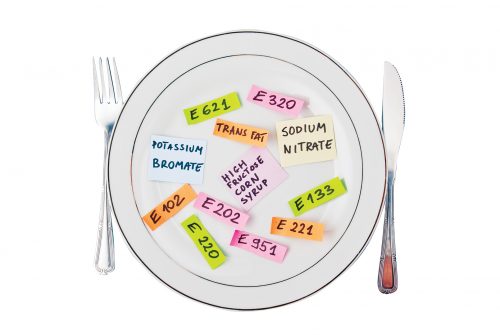
Ciska de Rijk and Gwendoline Keel, food law specialists at Simpson Grierson, explain the law around numbers on food labels.
We’ve all noticed the numbers listed with the ingredients on our food labels, but do we know what they mean? These numbers let you know that the food contains a food additive.
What’s the law got to say?
Food additives are substances not normally eaten on their own that are added to food to perform a technological function in the food. Food additives can be used to preserve food, improve taste or appearance, or improve the quality or stability of a food. Food additives can be synthetically made, like the sweetener aspartame, or they can come from natural sources, such as red colouring from beetroot plants.
Food additives normally come under a ‘class’ which is a category that indicates what the food additive does. Examples of classes include preservatives, sweeteners, colours and flavour enhancers. Food additives are also assigned international code numbers – these are the numbers that we see on food labels. These numbers can be used in place of the food additive names which can sometimes be long and complicated.
The Food Code requires most food labels to contain a list of all the ingredients contained within the product, including food additives. Ingredients are listed in order of ingoing weight, with the highest weight ingredient first.
Where’s the line in the sand?
A food additive cannot be used unless the Food Code states that it can be added to that specific food. All food additives go through a rigorous safety assessment process before being approved for use. Food additives will only be approved if it can be shown that no harmful effects result from its use. The Food Code contains a general list of permitted food additives and restricts additives that can be added to certain foods. For example, soft cheeses can only have ethyl lauroyl arginate (which is used as a preservative) added to them. Some food additives also have maximum permitted levels imposed so can only be added in limited amounts.
Consumer tip
Just because a food additive isn’t permitted for use under the Food Code, doesn’t mean that it is ‘banned’ or unsafe. It could mean that a food producer has not sought permission to use that particular additive. There are also food additives permitted in New Zealand and Australia that are not permitted in other countries for various reasons, and vice versa. Consumers should always check ingredients lists on food labels and research the food additives listed if they’re not sure what they are or why they’re added.
A high price
Find out more about the food additives permitted in New Zealand by visiting mpi.govt.nz.
A high price
In 2013, a number of butchers and company directors in Auckland were fined for using unsafe preservatives in their raw meat. The products contained sulphur dioxide and sulphites which are additives not permitted to be added to raw meat, as they can cause serious reactions in people who are sensitive to the substances. The offending butchers and directors were fined varying amounts, from $350 to $4500 each.
www.healthyfood.com










